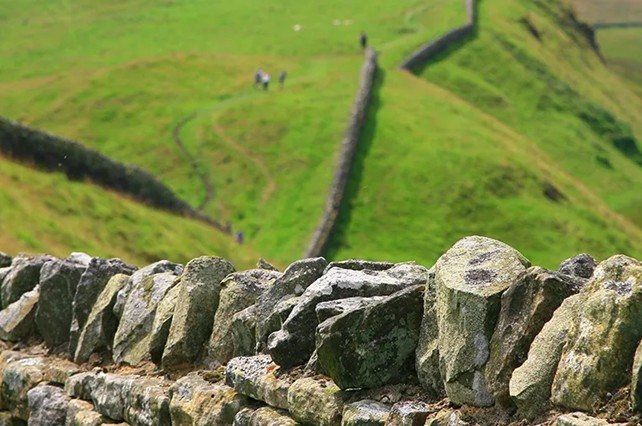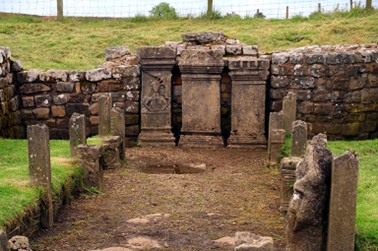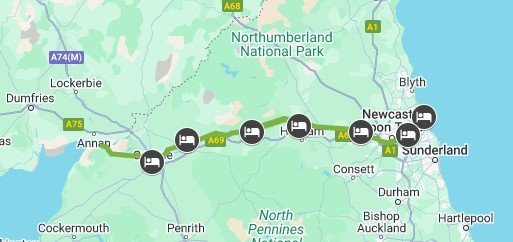Hadrians Wall was started as long ago as 122 A.D! At this time, The Roman Emperor - Hadrian - was having a lot of trouble with the restless natives to the north; those devilish blue painted Pictish and assorted Caledonian warriors were causing mayhem across the wild Northern frontiers and hassling trade and settlement. It became imperative to create some kind of order and consolidate the extreme North of the Empire, especially after one of the legion divisions was withdrawn from Britain to fight the German tribes, leaving Britain under defended. The wall was built “to separate Romans from Barbarians,” across northern Britain at its narrowest point between the Solway Firth and the North Sea. In its original form it was built in 6 years over 73 modern miles (80 Roman ones).
It was extended and enhanced with impressive stone defences following natural ridge lines and with a deep ditch (The Vallum) dug alongside it. Later, much of the stonework was mortared allowing it to survive the centuries to become one of the oldest manmade structures in the country today. The amount of work and finance that would have gone into the wall was immense - even with slave or conscript labour. Small forts called "Milecastles" were built every Roman Mile over the whole of the route. At intervals huge garrison forts were built so that a counterattack or raid could be organised at short notice.
Things are more peaceful today, and much of the imposing defensive structures were dismantled and used for building and field wall stone. This means that you can enjoy “walking the wall” unmolested by Romans or barbarians, on this alternative Coast-to-Coast route. It is a great walk, with a lot of scenic variety from the modern, busy cityscapes of Newcastle Upon Tyne to the red sandstone hues of medieval Carlisle, from industrial Tyneside to the quiescence of Bowness on Solway.
From the barren blustery heights of Highshields Crags in the Northumberland National Park; to the lush, green pastoral scenes of the Eden valley. Omnipotent along the route, the Wall snakes its way. In sections interrupting a housing estate here, popping up under a road there. Then from being little more than a grassy bank it transforms into stone and rollercoasters over crag tops and down into impressive fort like structures such as at Birdoswald and Housesteads.
Highlights
-
Experience the scenic variety of northern England from the modern, busy cityscapes of Newcastle Upon Tyne to the red sandstone hues of medieval Carlisle, to the quiescence of Bowness on Solway.
-
Explore the barren, blustery heights of Highshields Crags in the Northumberland National Park and the lush, green pastoral scenes of the Eden valley
-
Trace the history of the north as you walk alongside this iconic monument
-
Enjoy the hospitality of country B&Bs brimming with personality and local charm




